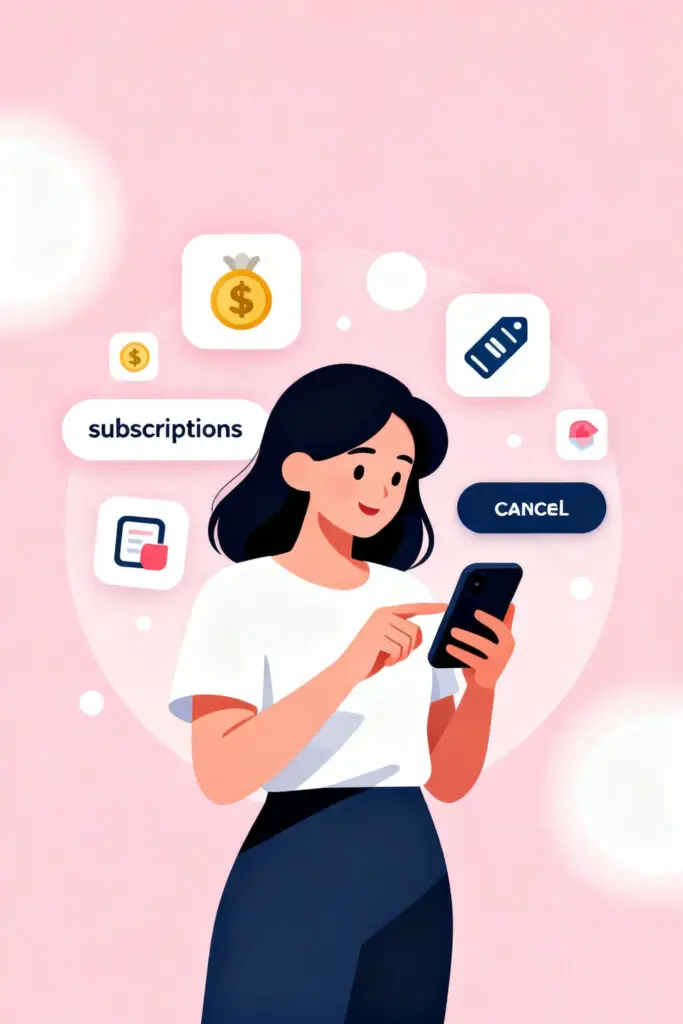Saving half of your income may sound like a distant dream that only financial experts or people with six figure salaries can achieve but the truth is that it’s less about how much you earn and more about intentions and what strategies you use. By using small hacks and tricks, you can create room for savings, making it easy for you to save half of your income without having to hold back on things you enjoy. This article will help you explore 37 simple hack to save half of your paycheck, bringing you one step closer to financial freedom without having you feel deprived or restricted.
1. Automate Your Savings

A helpful trick is to automate the transfers from your checking account to your savings account, so that way, you don’t have to intentionally put effort into transferring the money, relying less on willingness and more on consistency.
Over time, those small deductions from your checking account can add up to something meaningful, making it easy for you to save in an effortless and low maintenance way.
2. Use the 50/30/20 Rule With a Twist
In most cases, the 50/30/20 rule includes saving 20% of your budget but since we’re looking to save almost half of our income, you can flip the script by saving 40-50% of your income for saving and using the rest of the amount for your needs or wants.
3. Track Every Dollar for One Month
Spend at least one month tracking your expenses, whether big or small. Keeping a check on your spending habits can help you stay aware of what you choose to spend on, allowing you to make conscious decisions regarding your spending habits.
4. Cancel Unused Subscriptions

It’s easy to subscribe to services and not use them later on. Whether it’s streaming services, fitness, or apps, it is important to review your bank statements regularly and cancel anything you don’t use anymore.
5. Use Cash for Non-Essentials
Using cash can help you feel more mindful about your hard-earned money because this way, you can see money physically leaving your hands, allowing you to become more intentional with what you spend on.
6. Cook in Batches
For another helpful trick, you can make large portions of meals like curries, soups, or pastas, and then store them for later. Not only does this prevent ordering food whenever you feel hungry, it also cuts down on food waste, making this trick a considerable option.
7. Limit Food Delivery
Food deliveries and tips can impact your budget in a far worse way than you might ever realize. Instead of depending on deliveries, a better approach is to cook at home or pick up food yourself, which is not only cheaper but also a healthier option.
8. Buy Generic for Everyday Items
Generic or store-brand products often have the same ingredients as name brands. Switch for items like cleaning supplies, medications, or pantry staples, and you’ll notice your bill drop without sacrificing quality.
9. Shop with a List
It’s easy to fall for impulse purchases when you don’t have a list to stick to, which is exactly why it is important to make a list each time you go shopping. It can help you stay focused on what truly matters instead of falling for those tempting promotions.
10. Try a “No-Spend” Weekend
Pick one week each month and try to avoid anything that isn’t an absolute necessity. Whether it’s takeout, those coffee runs, or a shopping spree, aim to not spend on any non-essential expenses for the whole week.
11. Lower Your Utility Bills
Simple habits like turning off unused lights, switching to LED bulbs, or adjusting your thermostat can make a big difference to your monthly bills, making it a considerable option if you want to save half of your income.
12. Re-Negotiate Your Bills
Many companies can provide you with a better plan or better rate if you simply ask them. You can call your internet service providers, insurance or phone providers, inquire about discount or loyalty offers, and save a few dollars.
13. Use Cash-Back Apps and Cards
Earn money back on purchases you already make using cash-back apps or reward cards. It’s effortless saving but just make sure to pay off your card balance each month.
14. Meal Plan Around Sales
Instead of shopping for whatever sounds good, a helpful trick is to plan your meals according to what’s on sale. This can help you keep grocery costs to the lowest while making the most of what you buy from the sale.
15. Unfollow Temptation Accounts
It’s easy to be tempted by promotional emails or those social media accounts that urge us to buy. A simple yet highly effective way to deal with these accounts is to unfollow these pages and reduce our exposure to influencers or ads promoting these products, making you less likely to give in to impulse purchases.
16. Wait 24 Hours Before Big Purchases
Whenever the urge to buy something hits you, it is important to pause and reflect on your decision for at least 24 hours. In most cases, the urge to buy fades away, however, if it persists, you can go on and buy it. This 2 hour gap can help you reflect on your decision, allowing you to critically analyse the need of what you want to buy and if it’s worth the money you work so hard for.
17. Buy Used When Possible
Buying used items, whether it’s furniture, electronics, or clothes can help you save a significant amount without compromising on quality. Many secondhand items are in excellent condition, making it a smart and pocket-friendly choice.
18. Sell What You Don’t Use
Go through your closets, drawers, or storage and sell things you no longer use like old gadgets, clothes, or decor. This not only declutters your space but also puts extra cash in your pocket for your savings goals.
19. Review Your Insurance
Many people stick with the same insurance plans for years without realizing they could get a better deal. Reviewing your policy every year can help you find cheaper options or bundle deals that offer the same coverage for less.
20. Cancel Unused Gym Memberships
If you hardly ever visit the gym, it’s better to cancel your membership and switch to home workouts or free YouTube fitness channels. This way, you stay active without paying monthly fees that silently eat into your budget.
21. Use a Budgeting App
Budgeting apps can make money management simple by tracking expenses, sending reminders, and showing where your money goes. They give you a clear picture of your spending habits, helping you stay accountable to your savings goals.
22. Start a Side Hustle
A side hustle doesn’t have to be complicated, it could be freelancing, tutoring, or selling homemade crafts. The extra income can accelerate your savings progress, helping you reach your goals faster without cutting too deep into your lifestyle.
23. Save Every Windfall
Whenever you receive unexpected money like a bonus, gift, or tax refund, set it aside instead of spending it right away. Treating this as “extra savings” can quickly grow your financial cushion.
24. Buy in Bulk Wisely
Buying in bulk can save you money on everyday items, but it’s important to focus only on things you actually use often. This prevents overspending and ensures you’re saving, not wasting.
25. Cut Down on Coffee Runs
Those daily coffee runs might seem harmless, but they add up over time. Making coffee at home can help you save a surprising amount each month without giving up your morning ritual.
26. DIY Your Beauty and Self-Care
Instead of spending big on salon visits or spa treatments, try DIY beauty routines at home using simple, natural ingredients. You’ll still feel pampered while keeping your budget under control.
27. Avoid the “Sale Trap”
Sales can be tricky as they make you feel like you’re saving when you’re actually spending more. Before buying, ask yourself if you would still want the item if it wasn’t on sale, if not, skip it.
28. Use Public Transport or Carpool
Driving alone can be costly with fuel, parking, and maintenance expenses. Using public transport or carpooling with coworkers can save you hundreds each month while being kinder to the environment.
29. Track “Small Leaks”
Small expenses like snacks, apps, or quick online buys can quietly drain your budget. Tracking these leaks helps you identify unnecessary habits and redirect that money toward savings.
30. Use a Separate Account for Savings
Keeping your savings in a separate account makes it less tempting to dip into them. This creates a psychological barrier that helps you treat savings as untouchable, long-term money.
31. Reassess Subscriptions Quarterly
Every few months, review your subscriptions to make sure you’re only paying for what you actually use. This habit prevents unnoticed renewals from quietly adding up over time.
32. Embrace Minimalism
Minimalism isn’t about deprivation, it’s about valuing quality over quantity. When you focus on buying fewer, better things, you naturally spend less and save more without feeling restricted.
33. DIY Simple Repairs
Learning a few basic home or clothing repair skills can save you hundreds each year. Whether it’s fixing a leaky faucet or sewing a button, these small tasks help you avoid unnecessary service costs.
34. Borrow Instead of Buy
Before purchasing something you’ll rarely use like tools or books, see if you can borrow it from a friend or neighbor. It’s an easy way to save money and build community connections.
35. Save Change and Small Bills
Put aside your spare change or small bills in a jar each day. Over time, these small amounts can grow into a surprising sum that adds to your savings without much effort.
36. Set Specific Savings Goals
Having clear goals, like “saving for an emergency fund” or “buying a new car,” gives your savings purpose. When you know what you’re saving for, it’s easier to stay motivated and consistent.
37. Reward Yourself (Smartly)
Saving doesn’t mean you can’t treat yourself. Reward yourself occasionally in budget-friendly ways like a cozy night out or a small treat to stay motivated without undoing your progress.
Conclusion
Saving half of your income might sound challenging at first, but with the right mindset and a few intentional habits, it’s completely doable. The key isn’t to deprive yourself, but to spend more mindfully, making every dollar work toward your future rather than slipping away unnoticed. Start small, stay consistent, and over time, these little hacks will add up to something powerful like financial peace, freedom, and the confidence that you’re in control of your money.
